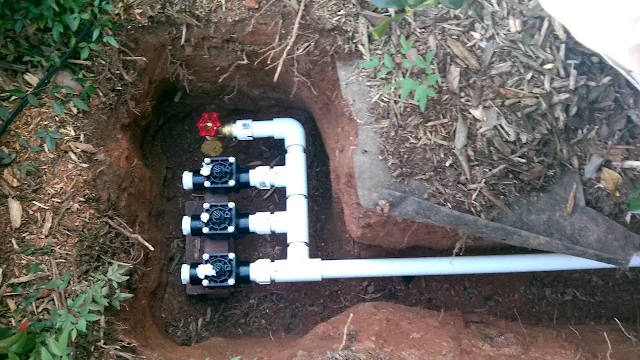Sprinkler Valves: How Do They Work?
Once programmed, automatic irrigation valves allow homeowners to turn their sprinklers on and off unattended and without thought. The valves are controlled by a computerized controller, or "clock," and are powered by safe, low-voltage alternating current (AC). They work in an extremely harsh atmosphere. They are continuously surrounded by dirt, water, and bugs that are attempting to invade and wreak havoc on their fragile innards. Years of research have resulted in designs that do an excellent job of keeping that debris out while keeping the water flowing.
Safety Considerations
In the world of electricity, twenty-four volts isn't much. If you touch it, you won't even feel a shock—even in a muddy irrigation trench. It would not be powerful enough to open a mechanical valve capable of withstanding water pressures ranging from 40 to 80 pounds per square inch (psi). No one wants high-voltage power running through their yard, nor do they want all the moving parts needed in a standard mechanical valve, let alone a valve that requires power to close.
Solenoid Valve Design
A solenoid valve is the solution. A rubber diaphragm that covers the input and outflow ports keeps the valve closed. Water enters an upper chamber through a tiny hole in the diaphragm. The valve remains closed as long as the pressure on both sides of the diaphragm is the same. A tiny vent inside the top
chamber leads to the valve's outflow side. A little plunger closes the vent and equalizes the pressure. When power is provided to the solenoid, an electromagnet lowers the plunger, and water flows through the vent, lowering the pressure above the diaphragm and causing it to pull away from the ports. Water is routed through the ports, down the pipes, and to the sprinklers.
the controller signal
The irrigation controller controls when the valve opens and closes. When the clock reaches the preset time, 24 volts are supplied to the solenoid's wires. The solenoid receives current until the clock reaches the end of the programmed time.
Fail Safe
One particularly brilliant element of this design is that if something goes wrong, the valve will most likely fail in the closed position, preventing the loss of thousands of gallons of water if a power outage occurs while the valve is open and unattended. If the controller loses power in the middle of a watering cycle, the solenoid shuts down, the plunger returns to its original position, and the valve closes.
Service Considerations
If a valve leaks, it's most likely due to a tear in the diaphragm or sand preventing the diaphragm from entirely sealing. If a valve will not open, there could be an issue with the wires connecting the controller to the valve or a defective solenoid. By physically opening the valve, one can verify this. Test the solenoid to see if it works manually. If the solenoid passes all tests, double-check all connections and look for areas where digging may have severed the wire connecting the valve to the controller.

